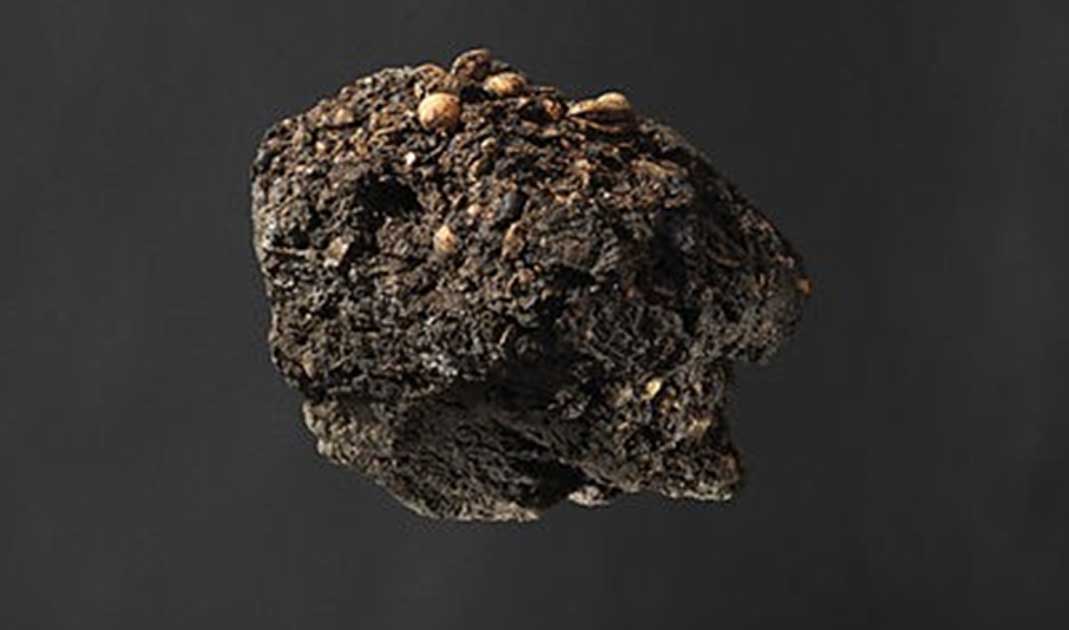Archaeologists Match 300-Year-Old Clump of Fecal Matter to the Bishop that Made it
What is in a turd? It all depends on the era that it was produced in, the person’s status in society, and of course what he ate beforehand. It turns out if you were eating at the table of the bishop of Aalborg in Denmark about 300 years ago, you had an interesting meal.
An article on Seeker.com about a lump of feces found in a latrine box from Bishop Jens Bicherod’s manor that was excavated in 1937 says the fecal matter contained grapes, figs, cloudberry, blackcurrant, peppercorns and buckwheat. A feast fit for a bishop.
It’s only recently that researcher Peter Mose Jensen of Moesgaard Museum examined the clump for what food remnants it might contain. Eventually the dried, odorless fecal matter may go on display in the museum.
“Now we have a specific lump of feces that we can match to a person we actually know, and through that we can study his diet,” Jette Linaa of the museum told Agence France Presse. Linaa is heading a project that is doing research on diaspora communities in Denmark from the early 15 th through the late 17 th century.

Jens Bicherod. Credit: ROYAL LIBRARY/MOESGAARD MUSEUM
As part of this project, the turd of the bishop, or whoever’s fecal matter the lump belonged to, is being analyzed.
Archaeologists concluded that this particular latrine was used just by the bishop and his wife, though it does not say how they made that conclusion. They said many people used other latrines of that time.
“This is totally unique. As a historian, I am very, very pleased. It is extremely interesting because we get to come in such close contact with a well-known family’s daily consumption and the food of the 17th century,” Jakob Ørnbjerg of Aarhus University is quoted in a story in TheLocal.dk.
One reason they concluded the feces issued from the bishop or his wife was that Bicherod was born in Odense on Funen Island—a big center of production for buckwheat then. In 1693 he was appointed bishop of Aalborg, which post he held until he died in 1708.

Aalborg is now a modern city (Wikimedia Commons photo/Tomasz Sieniecki)
The fecal matter’s deposition in the bishop’s latrine, plus the presence of the buckwheat, which they assume the bishop enjoyed eating, led them to speculate that this stool actually was from the bishop himself.
Another way they tentatively confirmed the source of the feces was by reading the bishop’s diaries, where he gave details about some of his meals. While the Danish populace ate staples like pork, cabbage and rye bread, wealthier people in Aalborg also consumed nuts and berries. The bishop did too.
Said Ørnbjerg ,“This little piece of crap is a little piece in the story of our shared history and how Denmark became what it became.”
“The exotic products were traded by some very specialized merchants in the city, and Aalborg was special because there was a class of very prosperous merchants who were all either migrants from Germany or from the Netherlands ,” Linaa told AFP.
That peppercorn? It would have had to have been imported all the way from India, Seeker.com says.
Top image: The fecal clump, probably from the bowels of Bishop Jens Bicherod around the early 1700s in Aalbord, Denmark, contained remnants of grapes, figs, cloudberry, blackcurrant, peppercorns and buckwheat, researchers say. The turd was dry and preserved in a latrine that probably was used only by the bishop and his wife. Credit: ROYAL LIBRARY/MOESGAARD MUSEUM
By Mark Miller



















